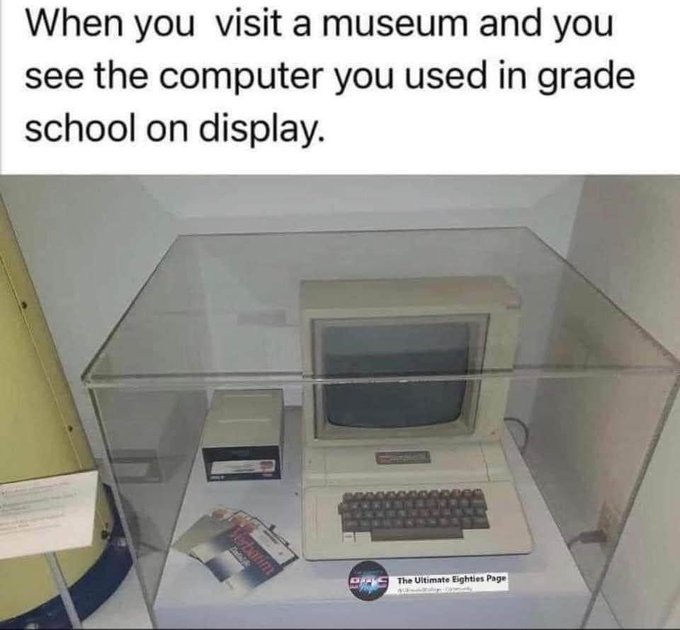this post was submitted on 14 Jul 2023
396 points (98.5% liked)
[Outdated, please look at pinned post] Casual Conversation
6593 readers
5 users here now
Share a story, ask a question, or start a conversation about (almost) anything you desire. Maybe you'll make some friends in the process.
RULES
- Be respectful: no harassment, hate speech, bigotry, and/or trolling
- Encourage conversation in your post
- Avoid controversial topics such as politics or societal debates
- Keep it clean and SFW: No illegal content or anything gross and inappropriate
- No solicitation such as ads, promotional content, spam, surveys etc.
- Respect privacy: Don’t ask for or share any personal information
Related discussion-focused communities
- !actual_discussion@lemmy.ca
- !askmenover30@lemm.ee
- !dads@feddit.uk
- !letstalkaboutgames@feddit.uk
- !movies@lemm.ee
founded 1 year ago
MODERATORS
you are viewing a single comment's thread
view the rest of the comments
view the rest of the comments


Apple II and its variants were used in schools well into the 90s. It was still selling pretty well even then. There's a great scene about it in the Fassbender Steve Jobs biopic.
Ouch. that is sorta sad actually.
I don't know if you mean Apple IIs, or the scene in the movie.
If you want to learn how computers work, the Apple II was, and arguably still is, a great platform. 8-bit programming is still fairly comprehensible to the novice, and the MIPS assembly language that is used in academic textbooks draws a direct lineage from the Motorola 6502 instruction set.
I learned basic 6502 programming on my Commodore 64 in the 80s, and I was shocked when I took a computer engineering course in 2010 that used MIPS assembly for the examples. It wasn't just easy to understand, it was the same in virtually every respect. I had no problem at all following the code.